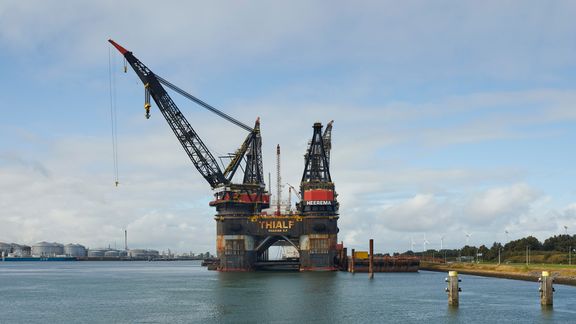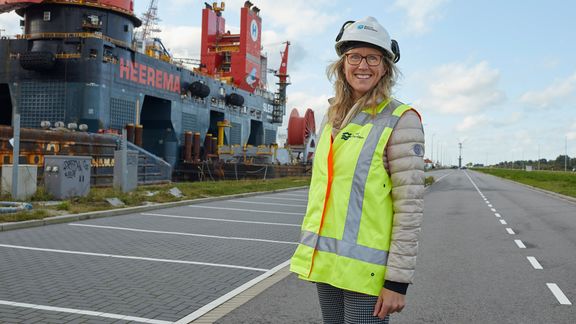The port of Rotterdam is working on shore power
By 2050, the port of Rotterdam aims to be emission-free. It will take some time, but in the short term there are already significant gains to be made from shore power. By 'plugging in' moored ships, they do not need to run diesel generators. That saves a lot of nitrogen, particulates, CO2 and noise. That is why the Port of Rotterdam Authority is working on shore power.
On the city quays in Rotterdam you can already find plenty of shore power for inland vessels. Nevertheless, shore power programme manager Floor Schipper is looking forward to a first: early this year, a new 20-megawatt green shore power installation has been commissioned on Landtong Rozenburg. This is in use by the enormous offshore ships of Heerema Marine Contractors and is the result of a collaboration between Heerema, the Port of Rotterdam Authority, the Municipality of Rotterdam and Eneco. A milestone for good reason, says Schipper: "It is great to see that it can be done with such large ships. It provides inspiration for others. You have to adopt the attitude of: why aren't you plugged in yet?"

Accelerating the implementation of shore power
Schipper is responsible for a team that deals with scaling up and accelerating the implementation of shore power in the port of Rotterdam. The implementation of shore power for inland vessels along the city quays is well under way. "But the really big steps will have to be taken in cooperation with the terminals and shipping companies. Such as at the container terminals on the Maasvlakte and shore power for offshore ships and ferries." Further down the line in the future, the focus will shift to the wet bulk ports. "We are still investigating what is and will be technically possible in that area."
Great future scenario
The aim is that by 2030, almost all moored container ships and passenger ships (cruise, ferries and roll-on roll-off vessels) will be plugged in. It means a 2% reduction in CO2 emissions from the port chain. "That might not sound like much, but it equates to about 200,000 tonnes of CO2 and a reduction in particulates, nitrogen and noise pollution. This is extremely important for the environment. It is, of course, only part of the task. A ship with an alternative fuel that enters the port on batteries and is moored with shore power: that's a great future scenario."

Hurdles
Schipper acknowledges that there are still hurdles to overcome for shore power: "A standard connection for container ships and cruise ships already exists, but engine rooms and power supplies have to be adapted, and there is more room for this on some ships than on others. It can be costly." However, the real challenges are on shore: "Such as the connections, cable ducts and operational systems on the busy quays. Fortunately, there are now more and more smart systems on the market. But it also requires significant power capacity from the grid operator. That demands cooperation, which we are also seeking with Stedin."
Important impetus
The government is now also convinced of the role that shore power can play in the energy transition. The Port of Rotterdam Authority and the Municipality of Rotterdam have been working together since 2020 to accelerate the roll-out. The government has allocated EUR 150 million in the 2022 budget for the installation of shore power in Dutch seaports. It signifies an important boost for the Port of Rotterdam and another milestone for Schipper's team. The ambition is to have completed eight to ten new shore power projects like the one at Heerema by 2025, together with terminal company owners. "Now, it's all about acceleration and perseverance; it’s a fantastic challenge for everyone involved."
photo's in this article: Eneco